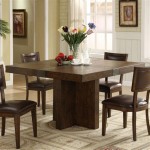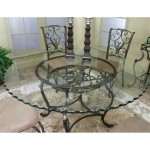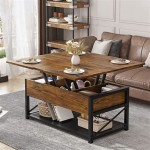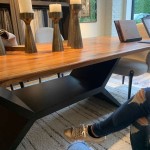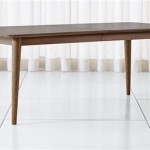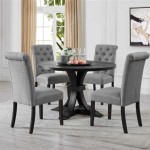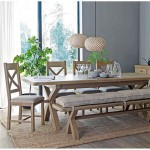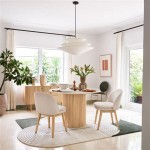Poker Table Top For Dining Table: A Versatile Addition to the Home
The concept of a poker table top designed for a dining table represents a fusion of leisure and practicality. This adaptable accessory transforms a conventional dining surface into a gaming arena, offering an immediate and reversible conversion that caters to both casual card games and serious poker enthusiasts. This article will delve into the design considerations, material choices, benefits, and potential drawbacks of poker table tops tailored for dining tables, providing a comprehensive overview for potential buyers.
The primary function of a poker table top is to provide a dedicated, comfortable, and visually appealing surface for playing poker. It must offer structural stability, a cushioned rail for player comfort, and a smooth playing surface that facilitates card dealing and chip movement. Furthermore, it should be easily stored when not in use, minimizing its impact on the dining room's primary function.
Design and Construction
The design of a poker table top for a dining table hinges on several critical factors, including size, shape, and portability. The size must be compatible with the dimensions of the dining table it will overlay, ensuring adequate playing space for the intended number of players without overhanging precariously. Common shapes include oval, octagonal, and round, each offering distinct advantages in terms of player visibility and reach.
Portability is a key attribute. Ideally, the poker table top should be lightweight and foldable, allowing for easy transportation and storage. Folding designs typically involve a hinged construction, enabling the table top to collapse into a compact form factor for storage in a closet or against a wall. The hinges must be robust and durable to withstand repeated folding and unfolding without compromising structural integrity.
The core structure of the poker table top often comprises a rigid substrate, such as plywood or medium-density fiberboard (MDF). These materials provide a stable and flat foundation for the playing surface and the cushioned rail. The thickness of the substrate is crucial; it must be sufficient to prevent warping or sagging under the weight of players and playing equipment. Reinforcements, such as crossbeams or a perimeter frame, may be incorporated to further enhance rigidity.
The rail, a padded border surrounding the playing surface, serves as a comfortable armrest for players. This is commonly constructed from a combination of foam padding and durable upholstery. The density and thickness of the foam are important considerations; a high-density foam provides superior support and resistance to compression, while a thicker layer enhances comfort. The upholstery material should be resistant to wear and tear, stain-resistant, and easy to clean. Common choices include vinyl, felt, and microfiber.
The playing surface itself requires a smooth, low-friction material that allows cards to slide easily. Felt, microfiber, and speed cloth are popular options. Felt offers a classic aesthetic and provides a good balance between smoothness and grip. Microfiber is a synthetic alternative that is more resistant to stains and spills. Speed cloth, typically a blend of polyester and spandex, offers the lowest friction, allowing cards to glide effortlessly across the surface. The chosen material must be securely adhered to the substrate to prevent wrinkles or bubbles that could interfere with gameplay.
Many poker table tops incorporate features such as built-in chip trays or cup holders. These additions enhance the playing experience by providing convenient storage for chips and beverages, reducing the risk of spills and clutter. Chip trays can be molded into the rail or attached to the underside of the table top. Cup holders are typically recessed into the rail and are designed to accommodate a variety of beverage container sizes.
Material Considerations
The selection of materials for a poker table top significantly impacts its durability, aesthetics, and cost. The substrate, rail padding, upholstery, and playing surface all contribute to the overall quality and longevity of the product.
For the substrate, plywood and MDF offer distinct advantages. Plywood is known for its strength and resistance to warping, making it a durable choice for applications subject to heavy use. MDF, on the other hand, provides a smoother surface for adhering the playing surface and rail. While less resistant to moisture than plywood, MDF is typically more affordable. The choice between these materials often depends on budget and anticipated usage conditions.
The type of foam used for the rail padding influences player comfort. High-density foam, such as closed-cell foam, is preferred for its superior support and resistance to compression. This type of foam maintains its shape and cushioning properties over time, providing long-lasting comfort. Softer, open-cell foams may be more comfortable initially but tend to compress more quickly, reducing their long-term effectiveness.
The upholstery material must be both durable and aesthetically pleasing. Vinyl is a popular choice due to its resistance to stains, spills, and wear and tear. It is also relatively easy to clean, making it a practical option for a gaming environment. Felt offers a classic look and feel but is more susceptible to stains and requires more careful maintenance. Microfiber provides a balance between durability, comfort, and stain resistance. The choice of upholstery material depends on the desired aesthetic and the anticipated level of use.
The playing surface material significantly impacts the gameplay experience. Felt offers a traditional feel and a good level of friction, allowing for controlled card movement. Speed cloth, as mentioned earlier, provides the lowest friction, enabling cards to glide effortlessly. Microfiber offers a slightly higher level of friction than speed cloth but is more resistant to stains and spills. The selection of the playing surface material depends on player preferences and the desired level of card control.
Benefits and Drawbacks
The primary benefit of a poker table top for a dining table is its versatility. It allows a dining table to serve a dual purpose, functioning as both a dining surface and a gaming arena. This is particularly beneficial for individuals with limited space who cannot dedicate an entire room to a poker table. The reversible nature of the conversion ensures that the dining table can quickly revert to its primary function when needed.
Another benefit is cost-effectiveness. Purchasing a dedicated poker table can be a significant investment. A poker table top for a dining table offers a more affordable alternative, allowing individuals to enjoy the benefits of a dedicated playing surface without the expense of a separate table. This is particularly attractive for casual poker players who do not require a professional-grade setup.
Portability is another key advantage. Poker table tops are typically lightweight and foldable, making them easy to transport and store. This allows players to take their game on the go, whether to a friend's house or to a vacation rental. The compact storage size also minimizes the impact on living space when the table top is not in use.
However, there are also potential drawbacks to consider. One limitation is the size constraint. A poker table top designed for a dining table is typically smaller than a dedicated poker table, which may limit the number of players who can comfortably participate. This can be a concern for larger poker games.
Another potential drawback is the lack of specialized features found on dedicated poker tables. These features may include built-in racetrack betting areas, dealer positions, and integrated lighting. While some poker table tops incorporate chip trays and cup holders, they may not offer the same level of functionality as a full-sized poker table.
Furthermore, the stability of the poker table top depends on the stability of the underlying dining table. If the dining table is wobbly or uneven, the poker table top will inherit these characteristics, potentially impacting the playing experience. It is important to ensure that the dining table is stable and level before using a poker table top.
Finally, the aesthetic integration of the poker table top with the dining room décor may be a consideration. While some poker table tops are designed to complement a variety of interior styles, others may clash with the existing décor. It's important to consider the overall aesthetic impact of the poker table top before making a purchase.

Barrington 10 Player Urban Poker Table With Dining Top

Spinning Center Board Game Table And Poker With Top Removable Cover Dnd Puzzles More Etsy

95 Solid Wood Poker Table Plus Dining Top

Rylie Rl500 Game Poker Table Dining Set On Free Delivery

The Rockwell High End Furniture Poker Table With Dining Top Options

Poker Dining Top Pool Table Usamadepooltables Com

Barrington 10 Player Urban Poker Table With Dining Top

Poker Tables Custom For Just

Rylie Rl500 Natural Game Poker Table Dining Set On Free Delivery

Sunset Trading Vegas 48 Round Reversible Top Wood Dining Poker Table In Gray Wal Com

